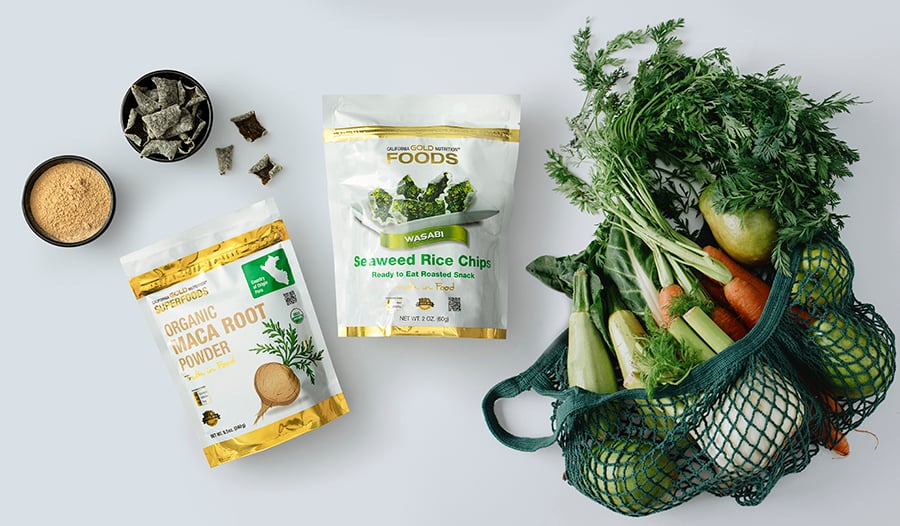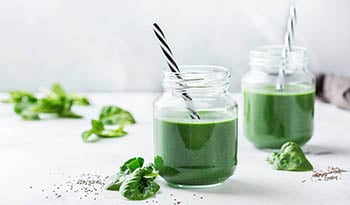Iodine Benefits: Understanding Fatigue, Deficiency, and More
DISCLAIMER:This blog does not intend to provide diagnosis...
- In this article:
- Symptoms Of Iodine Deficiency
- How Iodine Levels Affect Thyroid Health
- Who Is at Risk for Iodine Deficiency?
- Iodine-Rich Foods
- Consider Iodine Supplementation
- Always Consult Your Doctor

Our thyroid gland is responsible for many critical functions in the body, and the most noteworthy is supporting energy production and metabolism. Iodine plays a significant role in thyroid hormone production as a critical element in its molecular structure. If you are fatigued, it is important to consider iodine deficiency, because persistently low iodine levels can lead to autoimmune thyroid disease.
Symptoms Of Iodine Deficiency
If your iodine levels are not optimal, you may experience a variety of unwarranted symptoms. Some symptoms of iodine deficiency and thyroid dysfunction may include:
- Low mood
- Feeling increasingly tired and craving naps
- Irregular menstrual cycles
- Headaches
- Cold intolerance
- Thinning hair
- Shortness of breath more easily
- Brain fog
- Constipation joints
- Stiff joints and muscle soreness
How Iodine Levels Affect Thyroid Health
The thyroid is a butterfly-shaped gland surrounding the windpipe in the neck region. Its role is to produce thyroid hormones. Two major types of thyroid hormones are secreted from the thyroid gland, levothyroxine (T4 ) and L-triiodothyronine (T3). T4 and T3 affect the function of virtually every organ system.
T4 is an inactive form of thyroid and is secreted solely from the thyroid gland. Outside of the thyroid gland, T4 is converted to T3, also known as the active form of thyroid. They both contain iodine; the "3" and the "4" refer to the number of iodine molecules in each thyroid hormone molecule. Active thyroid hormone helps us optimize energy (control metabolism) by stimulating our cells to utilize vitamins, proteins, carbohydrates, fats, water, and electrolytes.
Because iodine is mandatory for thyroid hormone production, iodine deficiency leads to lower thyroid function. With a persistent lack of iodine to produce adequate thyroid hormones, the body is at a higher risk of developing autoimmune thyroid disease.
Natural Approaches to Thyroid Health: Read more.
Who Is at Risk for Iodine Deficiency?
Iodine deficiency is not common, but iodine insufficiency is becoming more prevalent. Those who choose healthier sea salt over table salt are at higher risk for low iodine because table salt is iodized (iodine is added to all table salt).
Other risk factors include:
- Eating a raw food diet high in cruciferous veggies like broccoli
- Drinking chlorinated water or highly fluorinated water
- Exposure to bromides and bromines
- Eating mostly processed food
- Having a family history of thyroid disease
Cruciferous Veggies
Cruciferous veggies include sulfur-containing vegetables and are often recognized by their distinct odor during the cooking process such as cabbage, cauliflower, and brussels sprouts. They are a group of vegetables considered power food because they are full of wonderful nutrients such as B vitamins, fiber, and antioxidants. One drawback is that during the digestive process, they yield a compound known as goitrin, which may interfere with thyroid hormone synthesis. This is only a concern if large amounts of raw cruciferous vegetables are consumed on a regular basis.
Drinking-Water
Both chlorine and fluoride directly interfere with iodine uptake. Chlorine and fluoride are usually found in tap water and some bottled water. A basic carbon water pitcher filter does not remove these elements; however, a reverse osmosis filter will remove these chemicals. Fluoride is often found in toothpaste and does help lower cavity formation. If you use fluoridated toothpaste, make sure to rinse your mouth before swallowing.
Bromides
Bromines and bromides are chemicals found in a wide variety of household products. Bromides are present in some flame retardants used on couches and car seats, carpets, mattresses, and upholstery. Exposure to bromines may occur in OTC medications, foods, and personal products like hair dyes. Be sure to check the label of your household products for these as they are known to disrupt the endocrine system of the body that is responsible for the production of our hormones.
Iodine-Rich Foods
Iodine is not usually plentiful in our diet. Only a few select foods have a high enough iodine level to make a positive impact on health. Food sources of iodine include:
- Sea veggies like seaweed and kelp
- Organic, local vegetables that come from mineral-rich soil and were recently harvested
- Shellfish and cod
- Maca root
Seaweed
Sea vegetables are one of the most underutilized superfoods available. Not only do they contain all of the minerals needed for health, but they also provide 10 to 20 times the minerals of land plants, plus the added punch of a range of vitamins. This family of vegetables ranges from microscopic plankton to massive kelp plants more than 1,500 feet long. Even though it is one of the world’s most abundant vegetable classes, most people rarely eat them.
Kelp is a large, leafy seaweed belonging to the brown algae family that grows in colder waters of the world's oceans. Kelp has been used for centuries as a nutritious staple ingredient in Chinese, Japanese, and Korean cuisines. Many health food stores supply a variety of tasty seaweed products, and sushi rolls often have seaweed as a common ingredient.
Fish
Lighter fish varieties have higher iodine than fattier fish such as salmon. According to the Icelandic Food Content Database, fish low in fat have the highest amounts. This includes cod, halibut, haddock, and pollack.
Local Vegetables
Locally farmed, organic vegetables have many health benefits. Without pesticide exposure, more minerals remain in the soil and transfer to the plant. Also, minerals and other nutrients in the vegetables are at their peak level right after harvest and decline with age. Getting vegetables from local organic farmers directly after harvest greatly increases your chance of getting foods higher in iodine. This contrasts with much of the produce from out of state or country that could be 2-3 weeks old and, therefore, much less nutrient-dense.
Maca
Maca, a plant native to Peru, has been used for centuries as a powerful immune booster. Its root is similar to the radish and is formulated in a powder to add to drinks and smoothies. It also packs a punch when it comes to iodine.
Consider Iodine Supplementation
Because it may be challenging to consistently get enough iodine in the diet, those with iodine insufficiency should consider supplementation. Iodine supplements are available in two main forms, topical and oral. Both increase iodine levels.
Because the concentration of iodine delivered through the skin in topical form can vary, topical dosing as not clear-cut. If someone is iodine deficient and topical iodine is placed on the skin, they are not only more likely to absorb the iodine, but they absorb the iodine at a faster rate.
An oral version of iodine is a healthy option and easier to control dosing. Iodine is usually taken in the form of a liquid that can be directly taken or placed in a drink or food. A replacement dose for deficient adults commonly starts at 12.5 mg and goes much higher. Iodine is typically safe, but should not be taken if not needed.
Always Consult Your Doctor
If you experience fatigue and suspect iodine deficiency or insufficiency, the next step is to have your doctor test your thyroid function and your iodine levels. Just a few drops of iodine supplementation may help to maintain healthy energy levels.
References:
- Patrick L. Iodine: deficiency and therapeutic considerations. Altern Med Rev. 2008;13(2):116-127.
- Zimmermann MB, Andersson M. Prevalence of iodine deficiency in Europe in 2010. Ann Endocrinol (Paris). 2011;72(2):164-166. doi: 10.1016/j.ando.2011.03.023
- Fenwick GR, Heaney RK, Mullin WJ. Glucosinolates and their breakdown products in food and food plants. Crit Rev Food Sci Nutr. 1983;18(2):123-201.
- Nerhus I, Wik Markhus M, Nilsen BM, et al. Iodine content of six fish species, Norwegian dairy products and hen's egg. Food Nutr Res. 2018;62:10.29219/fnr.v62.1291. doi: 10.29219/fnr.v62.1291

 By Dr. Nicole Craven, M.D.
By Dr. Nicole Craven, M.D.


